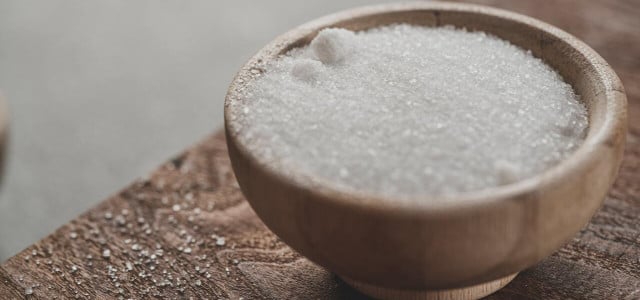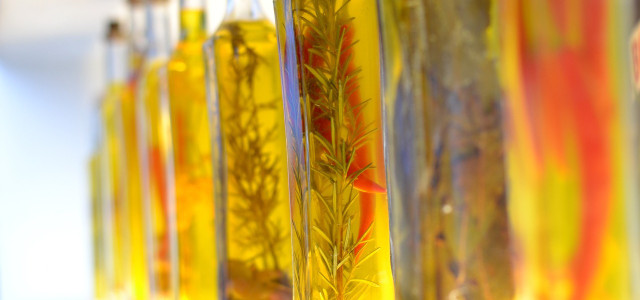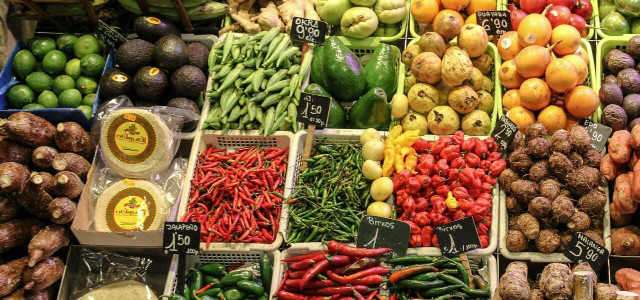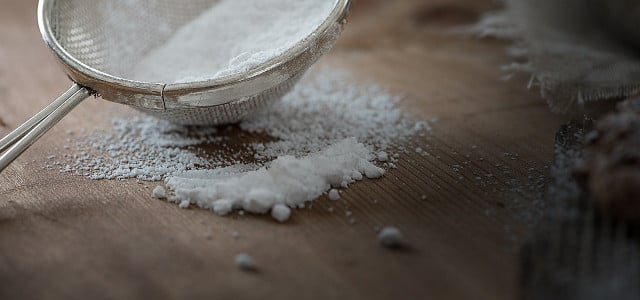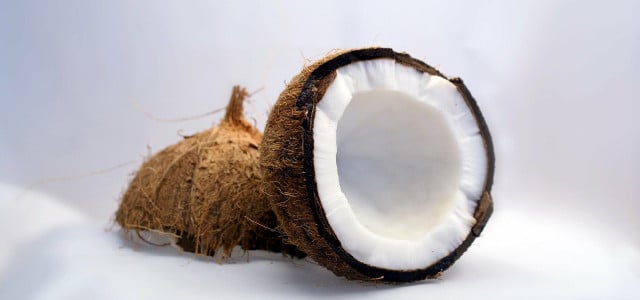Is sugar sustainable? Is sugar healthy or unhealthy, and is it vegan? Why are global authorities advising us to reduce our intake? What exactly is sugar anyway? Find out here.
Sugar is everywhere and can sometimes be confusing. There are so many varieties with different tastes, textures and uses. This versatility — alongside its deliciously sweet taste — has made sugar the foundation of the western food industry and our favorite ingredient in the US It is also a highly valuable world commodity.
After a slight decline, global sugar consumption exceeded 175 million metric tons in 2021. Production is projected to increase a further 15 percent by 2029. The world just can’t get enough.
Despite these trends, governments, authorities and environmentalists worldwide have begun focusing on reducing sugar intake and production. Even the World Cancer Research Fund International issued a brief to assist governments in implementing their sugar-reducing strategies. Because sugar is in everything, many of us are still confused about what we should and should not eat.
Knowing more about nutrition might help us understand sugar a bit better. Let’s start there.
In a nutshell, we rely on the calories in food as fuel for the energy we need to stay healthy. We get these calories from molecules called macronutrients in our food — known as carbohydrates, fats and protein. We need a lot of these nutrients. We also need ample, but lesser amounts of micronutrients, or vitamins and minerals, and fiber for a balanced diet and total health.
The human body prefers to save protein to build and repair itself instead of using it as fuel for energy. So, where we get our calories comes down to choosing between fats and carbs.
What many people do not know, or find confusing, is that the body eventually breaks down all digestible carbohydrates into sugars. The debate about whether fats or sugars are the healthiest sources of calories has raged for centuries, and we are nowhere near a conclusion today.
Did Sugar Saturate Fat?
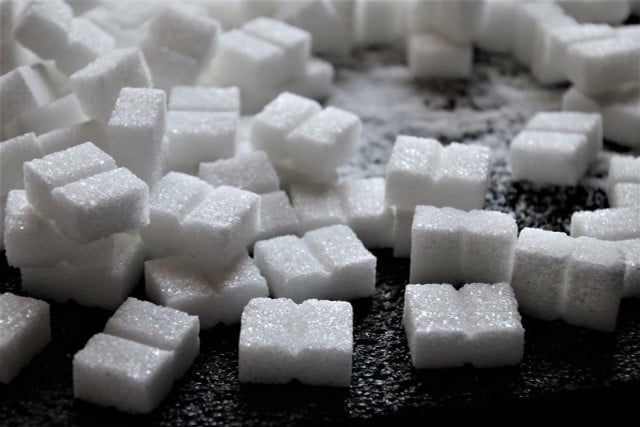
(Foto: CC0 / Pixabay / pasja1000)
For the last 60 years or so, fat — particularly saturated fat and its counterpart cholesterol — have been on nutritional death row because of its perceived negative impact on health. Meanwhile, carbs have reigned supreme as our leading fuel providers, giving sugar a very sweet and scientifically supported boost under the umbrella term carbohydrate. Current dietary guidelines in the US and worldwide recommend we get over half of our calories from carbohydrates.
Many researchers, however, now consider our association between saturated fat and negative health outcomes to be seriously flawed. While animal fats continue to be associated with negative health outcomes, plant fat does not seem to have the same effects. This is, of course, provided it has not been heavily processed.
Many experts now argue that over-consumption of carbohydrates, specifically sugar, is the true culprit behind the growing incidence of obesity, cardiovascular disease, diabetes and other disorders. The claim that sugar is more harmful than fat might seem like a modern take, but it appears the sugar industry has known for quite some time.
One 2016 study raises a lot of suspicions about the sincerity of the sugar industry’s morals and ethics. Researchers analyzing the Sugar Research Foundation’s internal documents and historical data from the 1960s concluded that influential Harvard research — data downplaying the health risks of sugar and emphasizing the risks of fat — was secretly funded by the sugar industry.
The funding behind the Harvard research was never publicly disclosed. Subsequently, the anti-fat, pro-carbohydrate findings were accepted by nutritional authorities and experts. Other, now widely criticized research reporting similar results was also accepted with little question.
What Exactly Is Sugar?
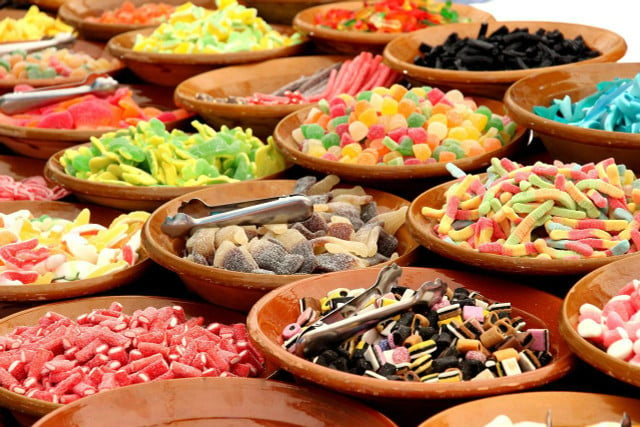


(Foto: CC0 / Pixabay / efes)
The terms carbohydrate and sugar are broad and encompass many foods, from wholegrain and fresh organic fruit to candy and soda. Understanding the role sugar plays in a healthy, balanced diet can be tricky.
The US Sugar Association’s goal is to “enhance consumer understanding and confidence in the role that sugar plays in a nutritious, balanced, and enjoyable diet.” Their statements below are designed to do just that:
- “Sucrose is simply the chemical name for sugar, the simple carbohydrate we know and love…”
- “…[sugar] is produced naturally in all plants, including fruits, vegetables and even nuts.”
- “…the sugar we keep in our pantry, the sugar added to bread to help it rise and the sugar in sweet treats we enjoy in moderation is exactly the same as sugar that’s naturally in peaches, almonds, sweet peas and more.”
This information might confuse you — especially if you’ve heard the warnings about different sugars being unhealthy. If these statements are true, sugar is just sugar. So does it really matter which sugar-rich foods we eat? Can we consume over half of our calories from candy and ice cream instead of fruit, vegetables and legumes? Is all sugar the same, regardless of where we find it?
The short answer is: absolutely not.
The Science of Sugar
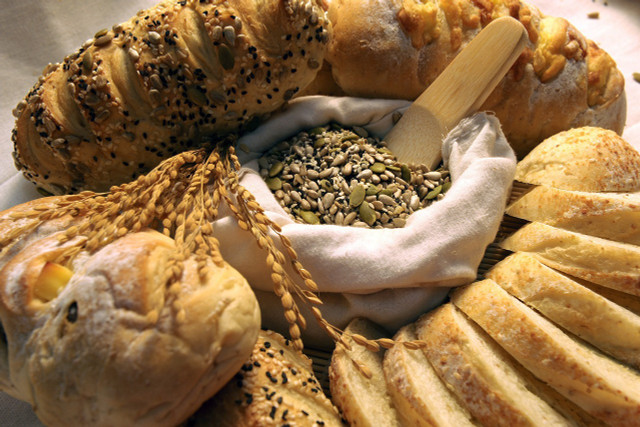


(Foto: CC0 / Pixabay / wuzefe)
All green plants do indeed contain sucrose. That much is true. All digestible carbohydrates are eventually broken down into simple sugars — that too is true, but there’s a little more to it. Some sugars are more complex than others. Our bodies break them down and absorb them at different speeds and in different ways. Simple sugars are absorbed faster than complex sugars. Plants usually contain both, affecting how quickly your blood sugar level rises after consuming them.
Complex carbohydrates, or polysaccharides, are generally found in healthy foods like grains, vegetables, nuts and beans. They are composed of long, complex chains of sugar molecules that combine chemically. Fiber and starch are complex carbs. The body can’t digest fiber, which travels through the digestive system unchanged and exerts massive health benefits. The digestive system then degrades starch into simple sugars.
Simple sugars, known as monosaccharides and disaccharides, are broken down and absorbed quickly. Sucrose is a disaccharide. So is maltose, found in cereals, beer and fast food, as well as lactose, found in milk and known as milk sugar.
Disaccharides are made of two individual sugar molecules, monosaccharides, chemically joined together. They are the simplest sugars. Three monosaccharides are the building blocks for all other sugars:
- Glucose — The most common simple sugar that most carbohydrates are broken down into. Glucose is the body’s favorite source of energy. Diabetes is a disorder whereby the body cannot regulate glucose levels in the blood.
- Fructose — Commonly known as fruit sugar. Fructose also occurs naturally in other forms like honey, sugar beets, sugar cane and vegetables. It does not raise blood sugar as rapidly as glucose and is the sweetest natural sugar.
- Galactose — Usually found as part of other sugars. Lactose, or milk sugar, is the most common dietary source of galactose in the western world.
What Is the Healthiest Sugar?



(Foto: CC0 / Pixabay / silviarita)
It would appear that Mother Nature knows how to package sugars much better than humans, despite what the Sugar Organization claims. When we eat carbohydrates from healthy whole foods, like wholegrain, fruits and vegetables, the natural sugar content is part of a dense nutrient and molecular matrix that makes up the plant itself.
The co-presence of fiber, vitamins, minerals and other compounds, like antioxidants, enzymes and plant chemicals, all influence how our bodies process and absorb sugars. The natural sugar and nutrients in organically grown, plant-based foods are the foundation of the American Healthy Plate recommendations. These foods are associated with a wealth of positive health effects, including:
- Lower body mass index
- Improved blood pressure control
- Improved blood sugar control
- Improved cholesterol levels
- Reduction in the number of medications needed to treat chronic diseases
- Lower rates of heart disease and mortality rates
Basically, sugars pose no risks to human health when organically grown and consumed with minimal or no processing. Even diabetics can enjoy the natural sugars in plants safely as part of a healthy and balanced diet.
They are, in fact, heavily recommended by the American Diabetes Association and The Physicians Committee for Responsible Medicine. If you are a diabetic or are concerned about your blood sugar, becoming familiar with the Glycemic Index of carbohydrates might help you consume these natural sugars safely. This index ranks carbohydrates based on how quickly they will cause a spike in your blood glucose level. To get started, check out the Glycemic Index of these twelve low GI fruits.
What Is Refined Sugar?



(Foto: CC0 / Pixabay / McRonny)
Natural sugars are the healthy sugars found in whole plants and are in a different form than they are after extraction.
Raw, refined, brown and other forms of sugar originate as natural sugars in plants. However, they aren’t the same because they are all processed in some way. The body metabolizes processed sugars differently from sugars in their natural state.
Sugar can be extracted from many plants because they contain so much of it. Sugar cane and sugar beet contain an abundance of sucrose and are the preferred sources for sugar extraction globally. Sugar processing and refining involve similar steps, regardless of which plant is harvested. Once the sugar is extracted, our favorite sugar varieties can be made.
Sugar cane is milled into raw sugar at one facility and refined at another. Sugar beets require less intervention and are processed directly into refined sugar at a single facility. Once the extraction process is complete, many types of sugar can be produced. The extraction and processing of sucrose from cane and beet typically follow these stages:
Sugar beet processing:
- Beets are harvested, washed, sliced and soaked.
- Juice is extracted and separated from other plant material and impurities to become syrup.
- Sugar is crystallized from the syrup.
- Crystallized sugar is spun in a centrifuge to remove excess liquid and molasses, a sticky and viscous substance part of the plant matrix.
- Crystallized sugar is dried and packaged for transport and distribution.
Sugar cane processing and refining:
- Canes are harvested, crushed and squeezed to extract juice separated from other plant material.
- Juice is boiled into syrup until crystallization takes place.
- When the liquid is removed, crystallized sugar is spun in a centrifuge to produce raw sugar.
- Sugar is transported to a sugar refinery.
- Raw sugar is melted and filtered to remove impurities and color.
- The sugar is recrystallized and spun in another centrifuge to remove excess liquid. Molasses is produced as a by-product at this stage.
- Crystallized sugar is dried and packaged for transport and distribution.
Many people do not know that cane sugar production often goes through another final step that raises the question: Is sugar vegan? Considering that sugar is extracted from plants, you could assume so — but the answer might surprise you.
Is Sugar Vegan?
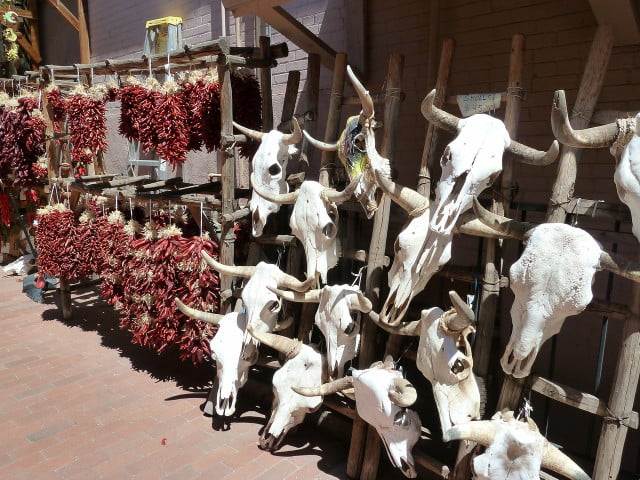


(Foto: CC0 / Pixabay / ArtTower)
During the refining stages, cane sugar is sometimes filtered and whitened using carbon to give it that clean white appearance we’re used to. What’s the problem with that? Well, the issue for vegans and health-conscious omnivores is that the carbon often comes from the charred bones of cattle. Worse still, the bones are neither traceable nor from American cows.
Bone char is a granular material that is about 10 percent carbon. It is made by grinding down cattle bones and roasting them at high temperatures. The FDA heavily prohibits using bone char from domestic cattle due to health concerns about mad cow disease (Bovine Spongiform Encephalopathy). Bizarrely enough, importing bone char from countries that are self-reportedly free of the disease is not regulated.
PETA reports that Afghanistan, Argentina, India, and Pakistan supply cattle bones and char to traders in Scotland, Egypt and Brazil. These traders then sell that bone char to our sugar cane industry as a whitener.
The Sugar Association claims that sugar is naturally white but has a golden color due to the presence of other plant materials. They say that sugar is automatically restored to its white hue once these materials are separated and removed. They do not provide details on the actual whitening processes.
Although not all sugar cane refineries use bone char as a whitener, many still do, so it’s essential to research your products. Some companies use alternatives like granular carbon, which does not contain animal products and is considered vegan.
Any sugar brands with the USDA Organic Sugar stamp of approval are vegan. The USDA restricts bone char from being used in the production process. Sugar extracted from beets does not need the same level of carbonic whitening and is also considered vegan.
You might think using brown sugar should be safe for vegans, as it doesn’t have to be refined for a bright white color. However, some brown sugars are actually refined (whole cane sugars like dark muscovado or jaggery aren’t, though) and are made from white sugar with molasses added for a darker color. Below, we’ll explain how ‘brown’ and ‘unrefined’ don’t mean the same things when discussing sugar.
Save yourself some time and check out our article on vegan brown sugar to learn more and find manufacturers and brands completely free from skeletal remains. The Vegetarian Resource Group also provides a comprehensive list and added information about the use of bone char in our sugar industry.
Common Sugar Varieties
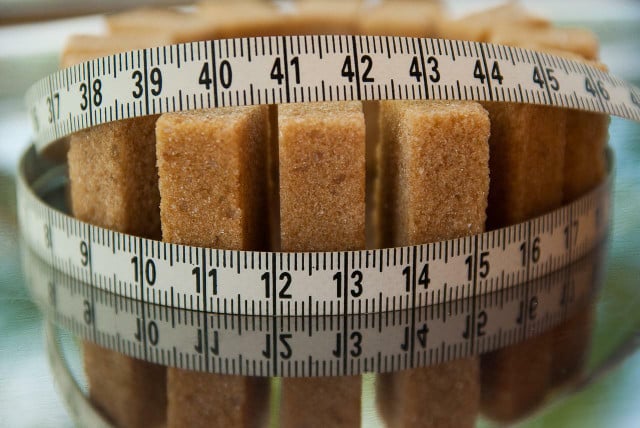


(Foto: CC0 / Pixabay / jackmac34)
Many varieties of sugar are possible because we can make adjustments in the many stages of sugar production. They are generally classified according to crystal size and color. The most commonly used types are white sugar. Below is a list of sugars you may be familiar with that are extensively produced and used across the US.
Raw sugar:
Raw sugars are minimally processed and contain 98 percent sucrose and 2 percent water, and some residual nutrients. Muscovado and Turninado are examples of raw sugars. These sugars are processed just enough to make them safe for consumption.
White sugar:
- Granulated sugar. Commonly known as refined or table sugar, granulated sugar is 100 percent sucrose.
- Caster sugar. More finely granulated than table sugar and dissolves easily. Caster sugar is used in syrups, cocktails, baking and cooking. It, too, is 100 percent sucrose.
- Icing sugar. This is commonly known as confectioner’s sugar. Icing sugar is ground into a fine powder used in baking and desserts. It is frequently mixed with cornstarch to prevent caking.
- Sanding sugar. A specialist sugar with either large or fine crystals that reflect light well. It comes in various colors and is used in food decoration and confectionery.
- Jam setting sugar. Used for making jams, marmalade and chutneys. Jam setting sugars are usually mixed with pectin, acidity regulators and vegetable oils.
Brown sugar:
Light and dark brown sugars are given molasses after refining, giving them their color and flavor. They are generally made by boiling brown sugar syrup or adding molasses to white sugar. These sugars are also heavily used in homes and the food industry — particularly in baking and cooking. Since additives like anti-caking agents usually aren’t added to brown sugar, they tend to be moister than white ones and can clump and stick.
Raw Sugar vs. Refined Sugar vs. Brown Sugar



(Foto: CC0 / Pixabay / feelphotoz)
The Mayo Clinic states there’s no nutritional advantage to brown sugar, or any other type of sugar, over white sugar. However, minimally refined brown sugar does not raise blood sugar as quickly as others.
In a study comparing the nutritional content of minimally refined brown sugar, traditionally processed brown sugar and refined white sugar, the minimally refined brown sugar was found to have higher levels of potassium, manganese, selenium, antioxidants and other plant chemicals.
However, these differences are considered insignificant per teaspoon because sugar is not a nutrient-dense food. Once processed and refined, the nutrient density is removed, and only pure sugar remains — regardless of the variety.
By varying the size of the sugar crystals and the quantity of molasses, industries can make sugars suitable for assorted purposes but lacking nutritional value. Its wide range of uses lets sugar be added to countless recipes, meals and processing techniques, leading to nutritional conflicts.
Refined Sugar vs. Coconut Sugar



(Foto: CC0 / Pixabay / Couleur)
Coconut sugar is a fine sugar made from the nectar of coconut flowers. It turns a distinctive hazel brown color when melted and has shown to be a potentially healthier sugar source compared to sugar palm and sugar cane juices. Coconut sugar boasts a higher vitamin, mineral and antioxidant composition.
These traces of nutrients are considered insignificant unless consumed in massive amounts, whereby the associated sugar risks outweigh any benefit. Coconut sugar also has the same calories as table sugar. Despite being so similar, the glycemic index of coconut sugar is substantially lower.
Sugar vs. Syrups
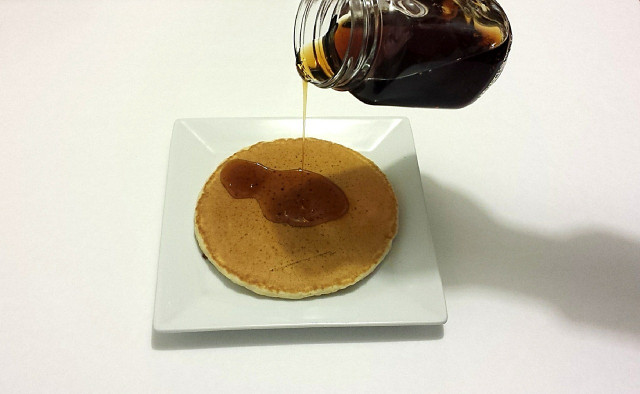


(Foto: CC0 / Pixabay / DWilliam)
Foods like honey, agave, maple and date syrup sit between natural and refined sugar. They are processed in the sense that they go through various extraction and purification stages. How many and what kind of stages determine their effects and benefits. Overall, compared to refined sugars, some of these more natural varieties exhibit positive effects on more than just taste buds.
Honey
Honey is extracted from beehives. Like sucrose, it is heavily processed and commercialized. Again, how much we manipulate this sugar seems to correlate directly to its health benefits.
Research links raw honey to antioxidant, antimicrobial, anti-inflammatory and anti-cancer effects. Some studies also find raw honey helps prevent memory disorders. The Mayo Clinic supports the use of this form of sugar in managing:
- Cardiovascular disease
- Coughs and respiratory disorders
- Gastrointestinal disorders
- Wound management
- Neurological disease
If honey from bees is not your thing, or you are looking for vegan honey alternatives, check out our article for some great ideas. Or, learn how to make dandelion honey from flowers and save yourself a trip to the store.
Maple Syrup
Maple syrup is extracted from the trunks of maple trees. It is a long-standing American (and Canadian) favorite for topping pancakes and waffles. The Cleveland Clinic recommends maple syrup as a potentially healthier source of sugar, highlighting its comparative advantages for immunity and blood glucose. Check out our article on how to make maple taffy and find out how to extract your own maple sap.
Date Syrup
Date syrup is made by extracting nectar from palm dates. Although it requires further validation, research shows that date syrup can inhibit the growth of bacteria faster than manuka honey.
It is also a more nutrient-dense source of sweetness than honey and maple syrup. Date syrup contains higher amounts of potassium, iron, calcium, magnesium, phosphorus and vitamins A, B, C and D. You can make date syrup in 7 easy steps to easily enjoy this nutrient boost at home.
Agave Syrup
Agave syrup is made by extracting sap from the Agave plant, native to Latin America and areas of the southern US. It undergoes a process of heating, filtering and refining to become a syrup. As a substitute for sugar, the research is conflicted. In some animal research, agave has shown positive effects on blood sugar control and weight management, while other experts argue that it is a higher-calorie alternative.
High-Fructose Corn Syrup
You can find high-fructose corn syrup in many products, particularly in processed sweets like ice creams, candies, cakes, soft drinks, breads and cookies. It is an artificial sweetener made from corn starch via a chemical process that produces syrup with a high proportion of fructose compared to glucose. High-fructose corn syrup is a controversial topic.
Some researchers blame high-fructose corn syrup for weight gain and metabolic dysfunction. Science strongly hypothesizes a link between high-fructose diets and disorders like cardiovascular disease, diabetes, kidney disease, insulin resistance and more.
However, insufficient evidence exists to support these claims that high-fructose corn syrup is any less healthy than other types of sweeteners. The US is the biggest corn producer and trader worldwide. Corn grows on over 90 million acres of American land, and up to 20 percent is exported. Like sugar, corn is a valuable commodity.
If you are concerned, find out about foods with high fructose corn syrup you didn’t know about to avoid accidental consumption. Check out our article on natural sweeteners to learn more about these syrups and other natural sweeteners and find the healthiest alternative for you.
Should We Eat Sugar or Not? How to Identify Added Sugars
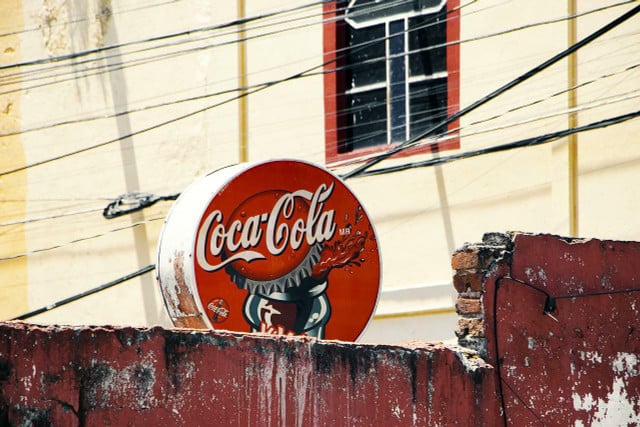


(Foto: CC0 / Pixabay / mike_ramirez_mx)
Sugar can be considered a natural sugar or an added sugar, depending on its source. It is regarded as a natural sugar when ingested directly from whole plant foods like fruits and vegetables. It is also considered healthy when eaten straight from these foods, without being extracted first.
Once sugar is extracted from its primary source, it’s considered an added sugar, because it provides additional calories to foods and beverages that don’t already contain them.
The CDC and Dietary Guidelines for Americans 2020-2025 advise limiting consumption of these sugars to less than 10 percent — preferably, less than 5 percent — of our daily calorie intake. This is intended to reduce the risk of obesity and tooth decay. Science has repeatedly revealed links between high added sugar intake and other disorders, like:
- Hypertension
- Inflammation
- Diabetes
- Fatty liver disease
- Cardiovascular disease
- Stroke
The World Health Organization (WHO) uses the term “free sugars” to describe those we should be most wary of. “Free sugars” refers to added sugars and extends to sugars in honey, syrups, fruit juices and fruit juice concentrates. Other sweeteners, like the sugar alcohols erythritol and xylitol, low-calorie sweeteners including aspartame and sucralose, and no-calorie natural sweeteners like stevia leaf extract and monk fruit extract, are not considered added sugars.
The FDA regulates food labeling. The association defines added sugars as those included during food processing or packaged as such, like honey and table sugar. They advise that Americans’ primary sources of added sugar are sweetened beverages, baked goods, desserts and candies.
Harvard University now warns that the FDA’s added sugar label is somewhat flawed. It argues that the sugar label doesn’t cover sugars from natural sources that are heavily processed during production, particularly sugars in fruit juices and smoothies.
To recognize added sugar in food, look for ingredients ending in “-ose.” For example, dextrose, sucrose and fructose. The list below covers common terms and types of added sugars to watch out for:
- cane juice and cane syrup
- agave nectar
- brown rice syrup
- brown sugar
- coconut sugar
- glucose
- sugar
- fructose
- honey
- invert sugar
- lactose
- maltose
- corn syrup
- sucrose
- maple sugar
- molasses
- nectar
- raw sugar
- dextrose
- malt sugar
- rice syrup
- high-fructose corn syrup
- white granulated sugar
- corn sweetener
- fruit juice concentrate
- malt
Over the last century, the increasing incidence of metabolic disorders in the developed world directly correlates to the growing consumption of processed and ultra-processed foods, particularly sugar.
Other refined carbohydrates, like white flour and white rice, processed vegetable oils and convenience food, also contribute to the rising rate of chronic disease. It looks as though an excess intake of unhealthy carbohydrates may indeed drive — or at least significantly contribute to — the frequency of illness.
Is Sugar Sustainable?
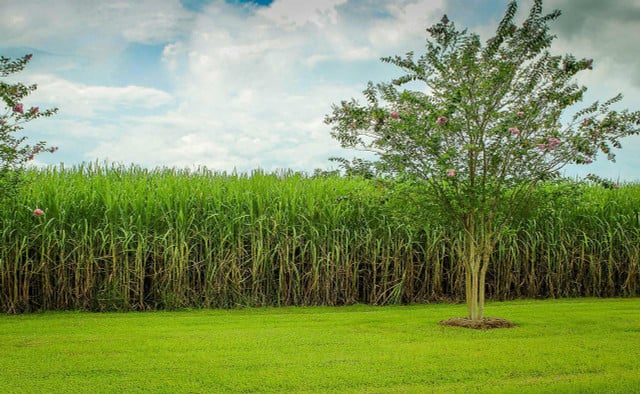


(Foto: CC0 / Pixabay / JamesDeMers)
Sugar cane is known as the hunger crop because of its association with poor labor conditions and low pay in developing regions. This often leaves those that harvest the sugar going hungry to feed western society. It is also a very thirsty crop, which wreaks as much havoc on the planet as it does on its workforce. Some of the sugar industry’s environmental impacts include the loss of natural habitats, intensive water consumption and the use of agrochemicals.
Using these chemicals is one of the ways in which humans contribute to air pollution, the degradation of wildlife, soil, and water where sugar is produced — as well as the degradation of downstream ecosystems. Sugarcane cultivation has been implicated in ecological disasters like that seen in Florida’s Everglades — whereby a toxic red tide sickened sea turtles and led to mass die-offs of fish, dolphins, birds and many endangered species.
The WWF highlights the following problems with sugar cultivation globally:
- Nine gallons of water are required to make just one teaspoon of sugar.
- Sugarcane farming has caused mass deforestation in some of the world’s most threatened ecosystems.
- Brazil’s Atlantic Forest has been reduced to just 7 percent of its original size for sugar cultivation.
- Farmers must cultivate almost 50 percent more land by 2050 to meet the projected global sugar cane demand.
- Sugar production pollutes freshwater ecosystems with silt, fertilizers, plant matter and chemicals from mills — which flow out to sea and damage coral ecosystems.
- It is estimated that 10 percent of soil is lost during the harvest of beet sugar and 3–5 percent of soil in sugar cane harvest.
Sugar is considered a potentially economically profitable raw material to produce food, feed, biofuel and other bioproducts. So, sustainable farming practices will be key in the future. All sugar cane and sugar beet plants’ biomass, like leaves and tips, are being investigated for their place in a sustainable future. Some research expects the crop to become the “new oil” for the following reasons:
- Potential to generate heat and bioelectricity
- Potential for the production of chemicals to make many products — including bioplastics, solvents and other chemicals
- It is considered a renewable carbohydrate feedstock for fuel ethanol production due to its availability and large carbohydrate yields per hectare
Others claim that growing sugar for ethanol will inflict even more harm on the environment by displacing other crops and rainforests, degrading soil and consuming water. Research into sugar’s alternative uses in a sustainable future continues. Meanwhile, the American Sugar Industry does strive to produce minimal-to-no waste during production. They use the non-sucrose components of the plant:
- Molasses is used by feed companies, bakers, distillers and pharmaceutical companies for various purposes.
- Many sugar cane mills and refineries produce their own electricity using sugar cane stalk residue called bagasse. Some even supply power to nearby towns.
- Most of the water used is pumped back into the stations to be used again.
- Carbon used in sugar cane filtration is also reused.
- The sugar beet residue is generally used as animal feed or further processed for further use as other carbohydrate-based products.
The WWF is working with sugar producers from the Global South and the Global North to promote sustainable farm practices through its Action for Sustainable Sugar. This rigorous certification program addresses human health, workers’ rights and environmental health.
Bonsucro is another leading global sustainability platform for sugarcane that aims to accelerate its sustainable production and uses. The Honduran sugar mill Azunosa recently received certification as the first Bonsucro member in Central America. The platform has 280 members from more than 50 countries worldwide.
These programs don’t just aim to address human and planetary health. Sugar causes degradation that extends beyond these physical elements — it also appears that sugar has harmed our politics, morals and ethics.
White Gold: A Global Commodity
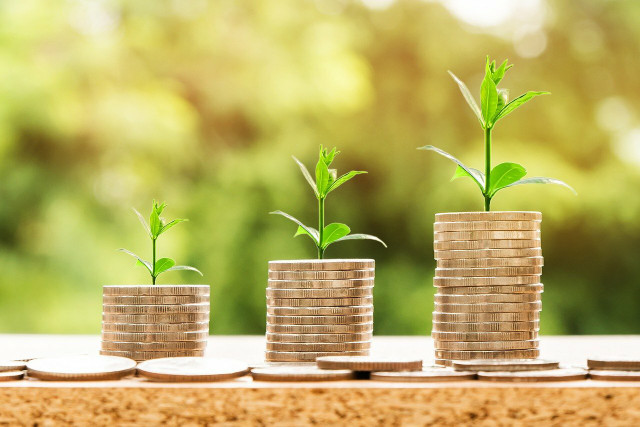


(Foto: CC0 / Pixabay / nattanan23)
The political realities of sugar are complex. Many farmers, workers and sugar-producing nations economically rely on its production and consumption. In short, sugar is a massive commodity. According to a recent Agricultural and Food Policy Center report, US sugar cane and beet industries generate over 23 billion dollars in revenue annually. They also employ over 150,000 people. The sugar industry in America is an extremely valuable economic resource.
Over 100 countries worldwide harvest sugar from beets or cane. Sugarcane accounts for almost 80 percent of global sugar production. The US grows both crops in large amounts, and around 900,000 acres of sugar cane are harvested here every year. Sugar production from beets is much less but has increased by three million tons since 2020.
Despite mass production, the US does not produce enough sugar domestically and is dependent on imports to meet demands. Through the US sugar program and trade agreements, the government restricts sugar imports to keep domestic prices artificially high. It also restricts domestic production, preventing us from meeting demands self-sufficiently. We are, therefore, reliant on imported sugar to meet our needs.
According to the Sweetener Users Association, these actions cause Americans to pay as much as two times more for sugar than many foreign consumers do. They also claim that the government is causing job losses in the domestic food and beverage industry. Furthermore, in view of current policies, the Cato Institute has accused the federal government of leading a nationwide sugar cartel. Like most cartels, the details become more unsavory as we investigate further.
Enslaved by Sugar



(Foto: CC0 / Pixabay / KlausHausmann)
Imports are increasing to meet America’s rising demand for sugar. The government heavily regulates how we import sugar and where from. Ninety-six percent of the forecast increase in sugar production over the coming years is projected to originate from developing countries. Most of our imported sugar already comes from economically weaker countries in Central America, South America, Asia, Africa and the Caribbean. It is usually bought in the form of raw cane sugar, refined here in the States.
According to the International Labor Rights Forum (ILAB) and others, workplace health and safety and child labor are significant issues in many of those countries. In numerous regions, workers must harvest sugarcane manually and are often forced to work for long hours in intense heat and terrible conditions. The US links sugarcane production to child labor in 17 countries — six of which are among the top 25 exporters in the world.
The Bureau of International Labor Affairs maintains a list of sugars and their source countries, which it suspects are produced by means that violate international standards. These include child labor or forced labor. The list comprises 156 goods from 77 countries.
According to the ILAB, this list exists to raise public awareness about serious labor violations worldwide and not to punish. They support focused coordination and collaboration with these countries instead of boycotts or punitive actions. The US continues to import from many of these countries — as opposed to increasing domestic sugar production.
In 2013, the American Department Of Labor issued a report confirming ongoing labor abuses and violations in the Dominican Republic, including:
- child labor
- hazardous working conditions
- wage theft
- denial of medical pension and other benefits
- routine violations of minimum wage and overtime rules
- retaliatory firings against union activists and workers who attempt to mount legal challenges against their employer
In January of 2022, congress asked the Biden administration to consider an import ban on sugar from the Dominican Republic. They wrote that “despite 10 years of effort, labor conditions in the Dominican Republic sugar sector remain abhorrent… [there have been] serious inquiries regarding inhumane labor conditions in the Dominican Republic’s sugar sector for many years.” The Dominican Republic is just one example of widespread human rights violations associated with the global sugar industry that we fuel with an insatiable demand for sugar.
Government support for sugar began early on. The New York Times depicts a murky history behind America’s white gold. They highlight how countless indigenous lives were destroyed, and nearly 11 million Africans were enslaved over the 400 years following the sugar’s arrival on American soil. Adults and children were sold and forced into a life of slavery under the constant threat of boiling furnaces and heavy machinery. Resistance was often met with cruelty and torture.
Boycotts in the UK were much more successful in abolishing slavery than efforts made by the US, which allowed sugar slavery to flourish for over five decades longer. It could still be argued that little has changed except the location of those exploited. So what’s the answer? Is a global boycott on sugar the only way to spread sustainability, health and fair trade across the world?
Fair Trade For All
If you are not in a position to banish sugar completely, always look for fair trade and organic labels. Fairtrade International changes the way trade works through improved prices, better working conditions and fairer deals for farmers and workers. This includes countries with labor rights concerns. The fairtrade mark also means the product is fully traceable from source to shelf. You can purchase Tate & Lyle granulated sugar or Wholesome Organic Cane Sugar on Amazon**. These options are fair trade, organic and vegan.
Other fair trade brands to watch out for (also available on Amazon**) are Trader Joe’s Organic Cane Juice Sugar and Woodstock Farms Organic Pure Cane Sugar. Any sugar that is certified organic is also vegan and will not contain remnants of bone char. Otherwise, sugar labeled as unrefined is vegan as well. Here are some popular organic sugar brands:
- Florida Crystals Organic Cane Sugar
- Wholesome Sweeteners Organic Sugar
- Domino Pure Cane Organic Sugar.
Finding a Sustainable Sugar Alternative
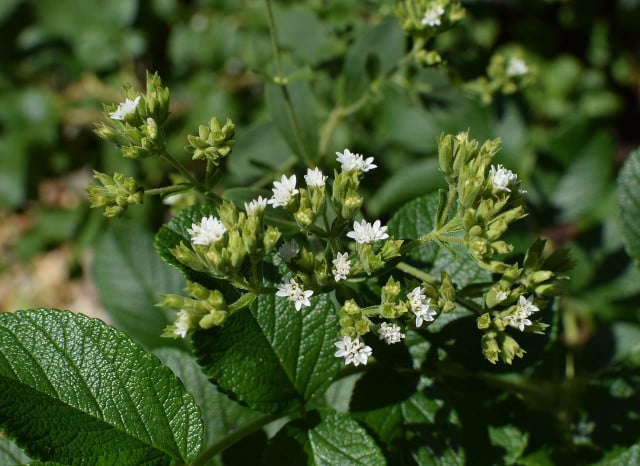


(Foto: CC0 / Pixabay / leoleobobeo)
One potentially valuable and sustainable sweetener is the stevia plant. Native to South America, it is now heavily cultivated in China, Paraguay, Kenya and the US. Stevia can be up to 300 times sweeter than sucrose, so less is needed to achieve the same level of sweetness. It is more sustainable as it requires less land, water and energy to produce.
An industry-funded carbon and water footprint assessment found an 82 percent reduction in carbon footprint for stevia compared with beet sugar. It also showed a 64 percent reduction when compared to cane sugar. The water footprint for stevia was 92 percent less than beet sugar and 95 percent lower than cane. That indicates more sustainable outcomes for the crop cultivated on US soil under fair working conditions. Leading sweetener producers in the States have signed up to increase stevia cultivation, given its emerging potential.
Stevia has demonstrated benefits to human health as well as that of the planet. Evidence suggests that stevia:
- shows minimal to no effect on blood glucose or insulin levels
- may be helpful in weight and diabetes management
- may reduce the risk of pancreatic cancer
- may have positive impacts on blood pressure
- shows a minimal risk of allergy
In 1991, the US banned stevia due to early suggestions that the sweetener may cause cancer. Four years later, after studies emerged that overturned these suggestions, the FDA approved it as a food supplement, but not as a sweetener. In 2008, enough evidence supported stevia as a safe alternative. It is now approved as a sugar substitute in America.
There are many ways we can try and save the rainforest, save the ocean and save humanity. Perhaps making the switch from sugar to stevia is one of them. Sugar’s murky past looks like it has evolved into an even murkier future that many of us don’t wish to be part of.
Check out some tips for dealing with sugar withdrawal before you completely cut out sugar from your daily diet.
Read more:
- Tropical Rainforest Ecosystems: Why Are They Important?
- Antinutrients: What Are They And Are They Dangerous?
- 11 Superfoods for Energy, but Also Sustainability
Important Information regarding Health-related Topics.
** Links to retailers marked with ** or underlined orange are partially partner links: If you buy here, you actively support Utopia.org, because we will receive a small part of the sales proceeds. More info.Do you like this post?






